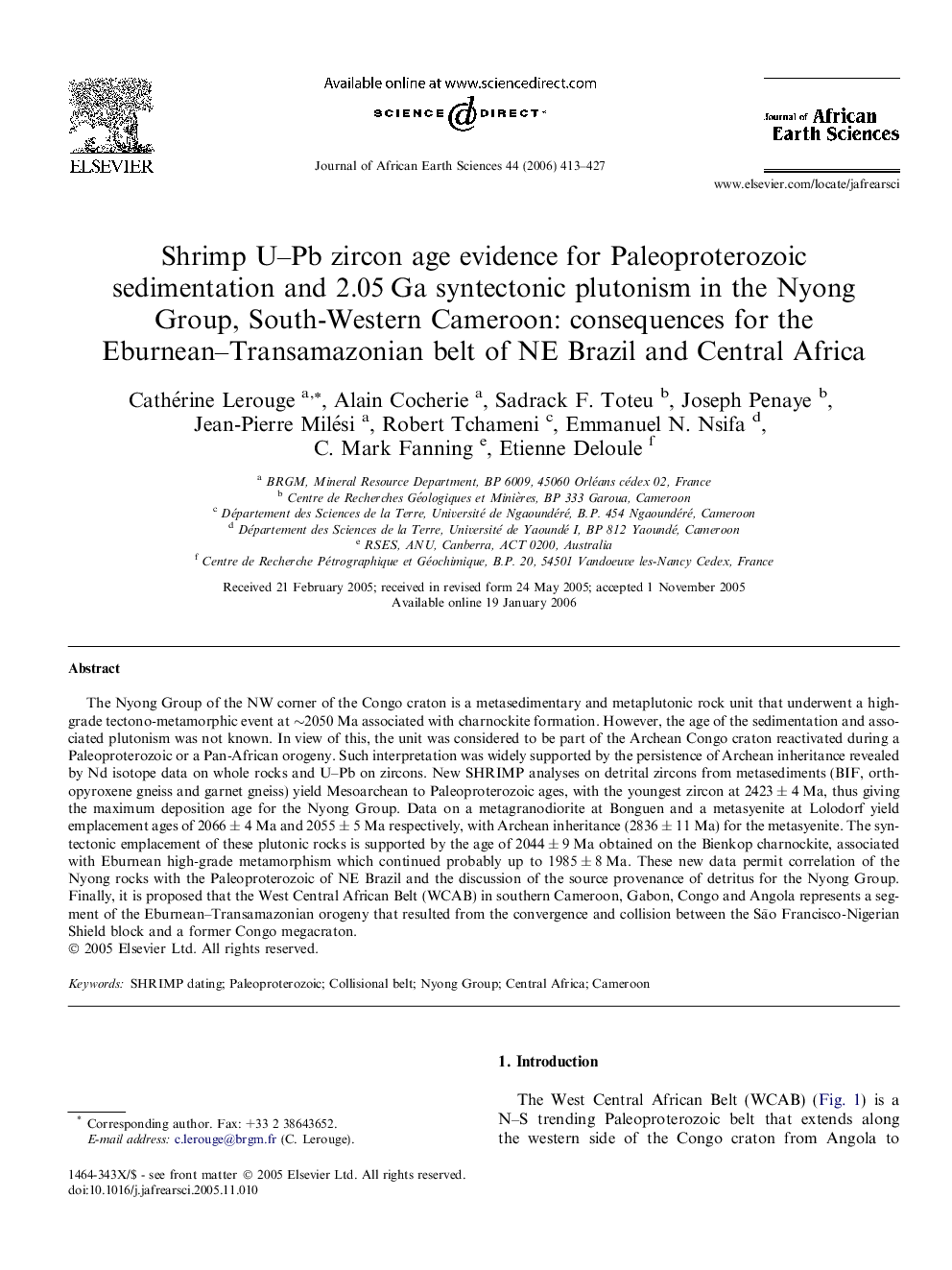| کد مقاله | کد نشریه | سال انتشار | مقاله انگلیسی | نسخه تمام متن |
|---|---|---|---|---|
| 4729908 | 1640264 | 2006 | 15 صفحه PDF | دانلود رایگان |

The Nyong Group of the NW corner of the Congo craton is a metasedimentary and metaplutonic rock unit that underwent a high-grade tectono-metamorphic event at ∼2050 Ma associated with charnockite formation. However, the age of the sedimentation and associated plutonism was not known. In view of this, the unit was considered to be part of the Archean Congo craton reactivated during a Paleoproterozoic or a Pan-African orogeny. Such interpretation was widely supported by the persistence of Archean inheritance revealed by Nd isotope data on whole rocks and U–Pb on zircons. New SHRIMP analyses on detrital zircons from metasediments (BIF, orthopyroxene gneiss and garnet gneiss) yield Mesoarchean to Paleoproterozoic ages, with the youngest zircon at 2423 ± 4 Ma, thus giving the maximum deposition age for the Nyong Group. Data on a metagranodiorite at Bonguen and a metasyenite at Lolodorf yield emplacement ages of 2066 ± 4 Ma and 2055 ± 5 Ma respectively, with Archean inheritance (2836 ± 11 Ma) for the metasyenite. The syntectonic emplacement of these plutonic rocks is supported by the age of 2044 ± 9 Ma obtained on the Bienkop charnockite, associated with Eburnean high-grade metamorphism which continued probably up to 1985 ± 8 Ma. These new data permit correlation of the Nyong rocks with the Paleoproterozoic of NE Brazil and the discussion of the source provenance of detritus for the Nyong Group. Finally, it is proposed that the West Central African Belt (WCAB) in southern Cameroon, Gabon, Congo and Angola represents a segment of the Eburnean–Transamazonian orogeny that resulted from the convergence and collision between the São Francisco-Nigerian Shield block and a former Congo megacraton.
Journal: Journal of African Earth Sciences - Volume 44, Issues 4–5, April 2006, Pages 413–427